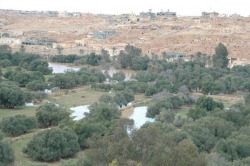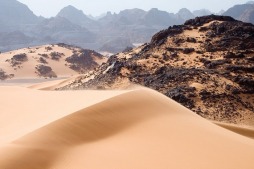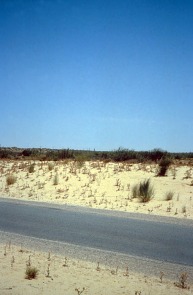Libya: Climate and Geography

Daria Morano
Libya: Climate and Geography
Libya is a country in the northern part of Africa that stretches 1,760,000 square kilometers along the Mediterranean coast. It is the fourth biggest country in Africa, and the fifteenth largest in the world. There are several highlands, but the land itself is not mountainous.. In the 1960’s, oil brought great wealth to the country, but due to its close location to Europe, it was not long before Libya lost control over their own raw resource. According to Country Studies, Libya was not so much affected by slavery, but was colonized by Europe.
There are five different climatic zones that can be found here, but the two dominant ones come from the influences of the Sahara Desert and the Mediterranean Sea (Country Studies). It is in the costal lowland where the Mediterranean climate can be found. There, temperatures are calm with warm summers and mild winters. Word Travels, an informational traveling guide website, states that temperatures are the most manageable between June and October, especially in the coastal areas where the weather stays around 80 degrees. The weather is cooler in the highlands and erotic weather can be found in the desert interior. In the desert, the summers can be very hot and the temperature range from day to night is very extreme. The Ghibli desert is so harsh that it can reach temperatures of up to 122 degrees Fahrenheit.
With little rainfall, and lack of rivers and streams, droughts often occur and can last up to two seasons. Libyan deserts can go decades without any rain (Word Travels). Rain usually falls in short winter periods and this can cause floods. For instance, in 1945, Libya’s capital, Tripoli, suffered a major flood and was submerged underwater for several days, and two years later suffered from a sever drought which killed many cattle (Country Studies). People may believe that this sounds unlikely, but the few salty lakes in the area and the harsh desert area cause a water hazard to the area, which results in these extreme floods and droughts. In order to try and fix the big issue with water, Country Studies claims that the Libyan government has constructed a network of dams for both water reservoirs and flood control. The water erosion, made worse by precipitation intensity, cause less productivity of rangelands and the land is suffering from land usage and population growth (Doctor Naturwissenschaften, 198). As one can simply assume from the information written in this paper, Libya’s climate severely affects its ability to grow crops and farm. In fact, there is a very limited agriculture that is able to thrive in this part of the world. “The uprooting of shrubs leads to the destruction of the soil structure and thus to accelerated erosion by wind and water” (Doctor Naturwissenschaften, 199). With the harsh weather, unpredictable rainfall, and unfertile soil, Libyans are reliant on resorting to other means of financial income as opposed to farming for food and money.
Works Cited
"Climate (and another called Geography)." Word Travels - Travel Guide. Destination guides for the world traveller. 04 May 2009 <http://wordtravels.com>. This site was useful in finding basic climatic information.
Country Studies. 04 May 2009 <http://countrystudies.us/>. This site was helpful in finding information especially on climate, though it had a lot of geographical facts as well.
Encyclopedia of the Nations - Information about countries of the world, United Nations, and World Leaders. 04 May 2009 <http://nationsencyclopedia.com>. This site had useful information on a big topic in the climate of Libya... rainfall. =)
Naturwissenschaften Dr. Climate Change in Libya and Desertification of Jifara Plain. Ägypten: Mainz, 2005. Deposit.ddb.de. 4 May 2009 <http://deposit.ddb.de>. This book had a lot of information on various climatic issues in Libya.
LAST UPDATED on May 22nd, 2009.




